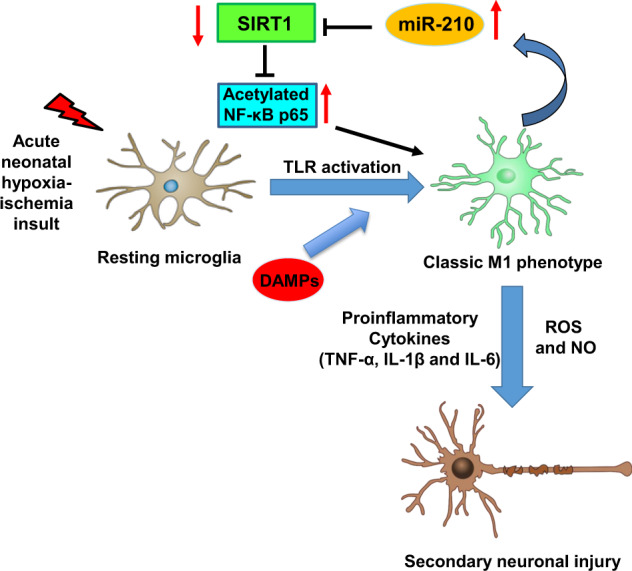Fig. 7.

Schematic of a proposed working model wherein miR-210 positively regulates microglia-mediated neuroinflammation via activating the NF-κB signaling pathway by targeting SIRT1 and blocking p65 deacetylation. Upon recognition of DAMPs following acute hypoxic-ischemic insult, developing microglia initiate the TLR signaling pathway that leads to NF-κB activation. NF-κB induces the production of proinflammatory cytokines (such as TNF-α, IL-1β, and IL-6), NO, and ROS, which promotes the apoptotic death of neural cells and causes secondary neurotoxicity. However, SIRT1, as a negative regulator, governs the excessive activation of microglia by deacetylating p65 at lysine 310 and suppressing NF-κB activity. As a HIF-1α-induced master hypoxamir, miR-210 is upregulated in microglia in response to neonatal HI, which rescues NF-κB activity by targeting the NF-κB signaling negative regulator SIRT1. Therefore, through upregulation of NF-κB activity, miR-210, as an autologous factor, promotes sustained activation of microglia and enhances microglia-mediated neuroinflammation in the developing brain
